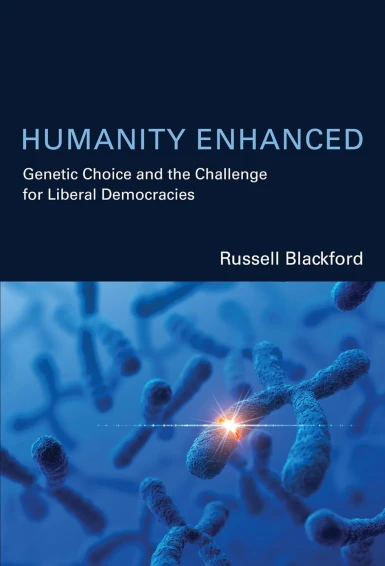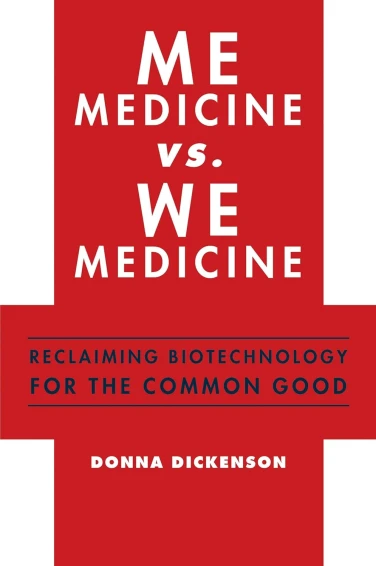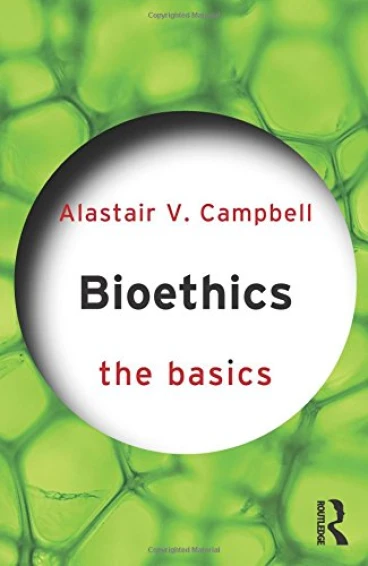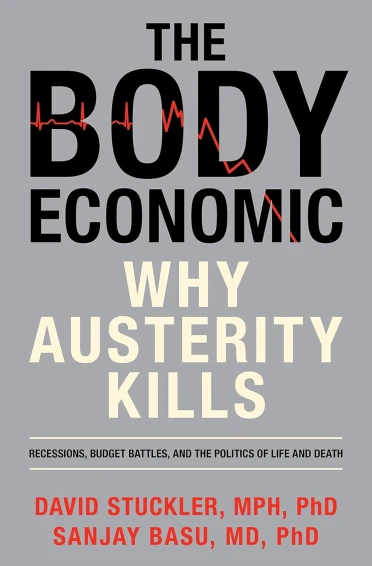
Daphna Birenbaum-Carmeli and Marcia C. Inhorn (eds)
Berghahn Books: Oxford, 2009
RRP: £58.00
ISBN 978-1845-456252
256 pp (hb)
Since 1978 and the birth of the first test-tube baby, Louise Brown, the proliferation of assisted reproductive technologies (ARTs) have been immense, allowing untold numbers of couples to have ‘a child of their own’. The global impact of these technologies has not been missed with in vitro fertilisation and DNA-based paternity testing being offered to many couples in numerous non-Western countries. What is often overlooked, however, is the impact they have on individual societies and culture. Living in today’s ‘global village’ may appear to mean more people are granted greater access to these technologies, but the application and impact of these technologies can differ considerably from one society to the next. This can be due to various social and economic factors but more often than not can be due to social and cultural differences. By looking at the impact and applications of these technologies through this lens, a fascinating set of perspectives and insights can be garnered in terms of understanding the adoption of new developments in science and technology within different cultural contexts.
Within the context of global-local, the book helps to identify the challenges which arise from local understanding of advances in science and technology. This is what Assisting Reproduction, Testing Genes: Global Encounters with New Biotechnologies seeks to do with specific reference to ART and does so rather well.
Focus
The book’s editors both comes from a medical and social anthropology background so it is perhaps no surprise that the book is classified as anthropology/gender studies. Moreover, the book has a very strong ethnography focus representing many hours of detailed and laborious fieldwork undertaken by the various authors. Moreover, from a social theory perspective the book is firmly routed in actor network theory (ANT); something the book editor’s readily acknowledge in the introduction. In this case, the clear advantage of this approach is found in the fact that new reproductive technologies can be examined and understood within the network of relationships between the various actors, such as patient, third party, medical professional et al. Consequently this helps to put a useful and refreshing human face to the impact of these new technologies. However, for someone coming to the book from an ethical background what becomes apparent as you read through the book is one of the weaknesses of ANT – amorality. No discussion is given to the responses of the various actors in terms of right or wrong. Likewise, at points particularly in the chapters on surrogacy in Israel and egg donation in Ecuador seems to be an overtly strong focus on endless chains of associations, another recognised weakness of ANT.
The prime focus of ANT is the study of the network of relationships and connectedness. As such, for those coming from more of an ethical, philosophical background the book is perhaps frustratingly light in terms of ethical analysis and discussion. Nevertheless, the ethical questions are still there to be seen, albeit just under the surface of the more prominent anthropological discussion. Indeed, many ethicists would do well to engage with the book in order to develop their understanding and appreciation of the human dimension to the questions surrounding the application of ART, so as to further inform their thinking. Nevertheless, it is wise to continue to recognise that the book’s approach represents but one of many perspectives which can be considered without totally rejecting or accepting the worth of ANT.
Another strength of the book is the attention it pays to gender perceptions and power relations. When it can be all too easy to focus on the role of women and acute feminist approaches to reproductive technologies, the book strikes a good balance between focusing on how male and female are perceived in this context. Men are so often considered invisible in these discussions when in actual fact more than half of all infertility cases around the world involve a male factor. The book’s approach ably makes this point through its numerous case examples.
Whilst the book will therefore be of particular relevance to anthropology and sociology students it is also a book which could be easily accessible by those outside those disciplines.
Structure
The book forms the eighteenth volume in the Fertility, Reproduction and Sexuality series published by Berghahn Books. The authors’ lengthy introduction to the volume helps to comprehensively introduce the subject matter and survey the focus and content of the book.
Consisting of ten chapters, the book is divided up into three parts. The first addresses the reproductive technologies and new social orders. The second considers the utility and impact of ART on couples where a third party is used, such as donor insemination and surrogacy. The third and final section looks at the matter of testing genes and the impact of advanced genetic technologies such as preimplantation genetic diagnosis (PGD) and paternity testing.
Overall the book has a strong and tight structure which helps to ensure that no one chapter feels out of place or obscure to the rest of the book. The division of the book into three parts is well thought through and aids the reader’s journey through the book. Selecting a chapter from each part does not necessarily indicating these are the ‘best’ chapters but merely highlights the fact that they are chapters worthy of note. From part I, chapter one which addresses Turkish migrants experience of infertility treatment in Germany, was particularly engaging. The chapter skilful highlights the profound disruption which occurs when Turks cannot enact the societal gender roles and fulfil cultural expectations of parenthood. For example, the German-Turks interviewed by Vanderlinden could not understand why they were questioned concerning their motivations for having children. To them, having children was a predetermined path and not something of choice or preference. Coupled with this is the challenge that Turks experience as long-term permanent residents without citizenship rights in Germany, thus access to fertility treatment is extremely difficult. Therefore the paradox arises where they are included but also excluded at the same time. As Vanderlinden notes, the individual body, the social body and the body politic are interconnected. The German Turks’ embodied distress is linked to their anxiety about not feeling apart of the German-Turkish social body and their stress regarding their exclusion from the German body politic. With stories of immigration and healthcare provision never too far from the media headlines, both in the UK and further a field, this chapter provides a perspective which may not be so readily considered, but is of importance if the cultural mix of European countries looks sets to be transformed in the years to come.
Law, Ethics, and Donor Technologies in Shia Iran
Chapter 5 (‘Law, Ethics, and Donor Technologies in Shia Iran’) charts the rapid development of ART in the Middle East and particularly in Iran. What is particularly interesting and helpful in this chapter is the discussion and exploration of how Islamic law (shari’a) has responded to the advances in ART which have occurred subsequent to the arrival of IVF. In the case of IVF, no major problems were encountered as IVF was considered a beneficial and useful technology for an infertile couple to embrace. No third party was involved and so no implications arose concerning lineage and kinship, both important matters in Islamic teaching which considers a child belongs to his or her father and is his property. However, with third party involvement has come direct challenges to lineage and kinship and so Islamic jurists have had to grapple with the dilemmas which have ensued.
The chapter serves as a useful example of the need for the various faith traditions, not just Islam, to actively engage with the advances in science and technology so not only to help inform believers in their engagement with them but also so as to help inform and contribute to the conversation surrounding the wider social, ethical and moral implications of these technologies. As Tremayne acknowledges in the chapter, the lack of clarity in the case of Islamic rulings has left a wide gap in ethical and moral aspects of ART leaving it to individuals to try and chart their course through the plethora of ethical dilemmas which ensue. As the gaps start to appear, the balance of power looks set to shift to biomedical knowledge as the authoritative source regarding ARTs.
PGD in Argentina
Turning to part 3, chapter eight looks at the practice of PGD in Argentina. The author does not simply report on her fieldwork study of Argentinian couples who may have been offered PGD and the reasons why they have chosen to go through with PGD but frames her discussion and study in terms of, in her opinion, the key ethical question surrounding PGD both on the local and the global stage: how to define and treat the in vitro embryo. Whilst this is an undeniable question associated with the use of PGD it is interesting to see how Raspberry has taken this head-on as the key question by which to frame her discussion, a question which is often the focus of much polarised debate surrounding topics such as abortion and stem cell research but which is also related to any advance in the field of ARTs.
As the chapter develops the readers begins to understand Raspberry’s reasoning for taking this focus. The prevalent issue amongst Argentine reproductive-medicine professionals is not the issue of choice, of using PGD to select for or against a particular trait but rather the moral ambiguity of the embryo. Thus this issue of ‘the right to life’ of the embryo is actually shaping discussion and application of the technology. A fine balancing act is currently taking place between seeking to “do less” to the in vitro embryo and desiring to perform and provide the latest in ARTs which by implication entails some form of embryo manipulation. Within this context, she discusses the influence of Catholic teaching on the practice of ART in Argentina and the concerns fertility expert share over the future direction of legislation. Looking at the example of Italy which introduced stringent legislation, owing to the strong and controversial influence shown by the Catholic Church in helping to shape it, experts are concerned that the Italian model may well be adopted by Argentina. Whilst Raspberry’s argument that reproductive experts fear that Argentine fertility clinics are producing babies as well as particular ideologies of modernity, motherhood, health and morality is a valid one, it does not seem to take into consideration other factors which could also influence decision making and moral judgements in this case. Surprisingly, little discussion if any is given to the impact on decisions and the networks of association over concerns regarding eugenics, designer babies and the effect of germline modification and future generations. Another example of the weakness of ANT?
Conclusion
In conclusion, Assisting Reproduction, Testing Genes skilfully puts a human face to many of the issues surrounding the advances in ARTs. In doing so it helps to bring the attention of the reader but to the fact that whilst these discussions require cross disciplinary expertise there is also the very real need to ensure that the conversation does not become so abstract and theoretical that the practical, real and applied is overlooked or forgotten. The perspectives of the individual and society are the viewpoints which are championed. The book raises more questions than it does answers and this may well point to the book’s grounding in ANT, which certainly has a valuable role to part in analysing and contributing to the conversation but has its weaknesses.










